Jean-Étienne Liotard Breakfast Scenes
The 18th-century painter, miniaturist, and pastelist Jean-Étienne Liotard is perhaps one of the most eccentric artists of his time. Known for his...
Anna Ingram 16 September 2024
Marie Antoinette, the last Queen of France and Navarre before the French Revolution, is renowned for numerous portraits that depict her life. However, during the Revolution, she became known as “Madame Déficit.” This name stemmed from the nation’s financial crisis, with blame directed at her extravagant spending and resistance to social and financial reforms. Additionally, she is infamous for a purported response, “If they have no bread, then let them eat cake,” though its authenticity remains doubtful. Join us as we delve into the life of Queen Marie Antoinette through the lens of her captivating portraits!
Before the wind of history howled for Marie Antoinette, she was well-known for amassing artworks of extraordinary opulence and beauty. In particular, the queen ordered a lot of portraits by Élisabeth Louise Vigée Le Brun, as well as some by other artists. Here we have gathered 10 of them.
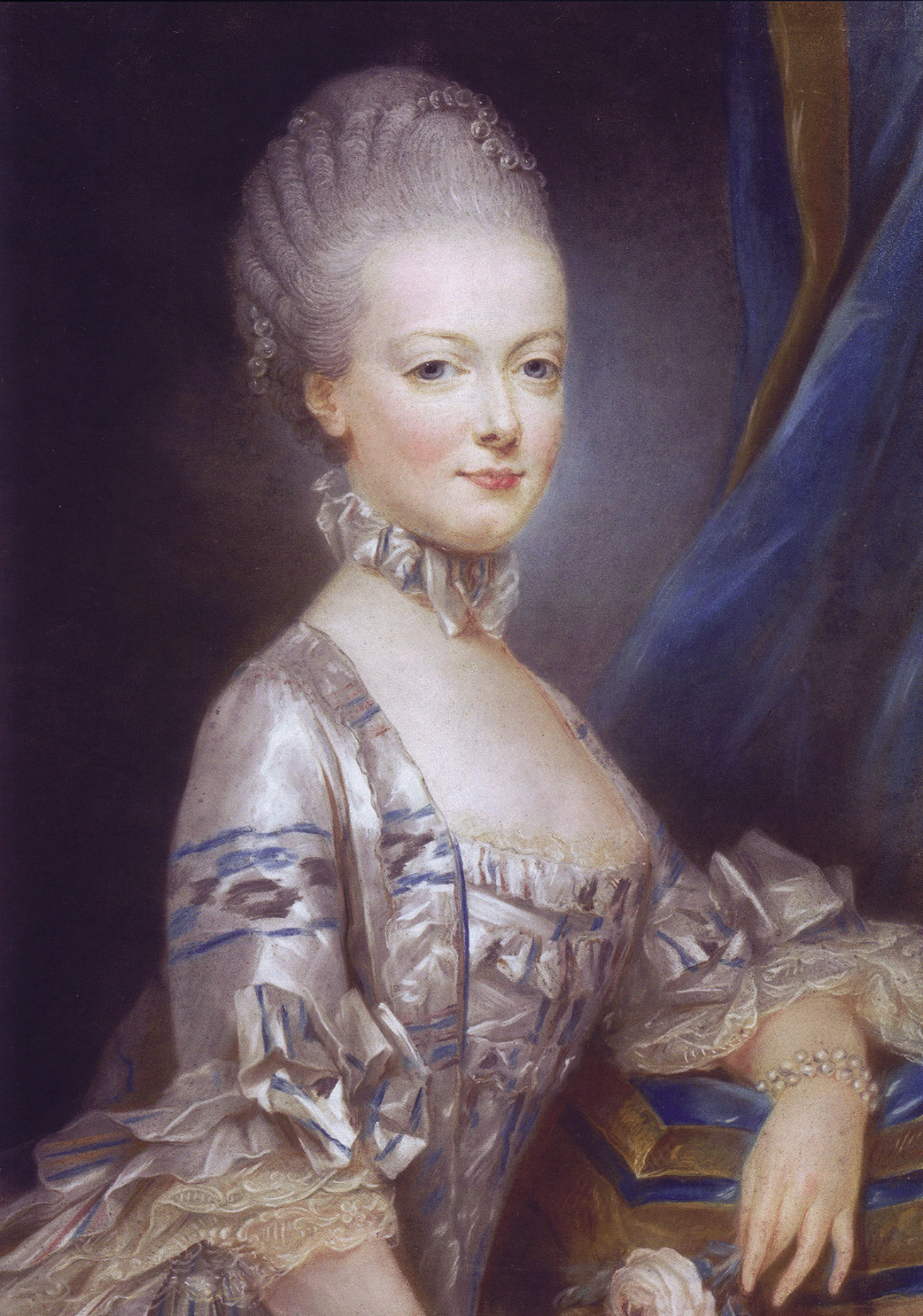
This miniature portrait was sent to Louis Auguste, the Dauphin of France—the heir of the French crown, to show him what his future bride looked like. He must have been impressed. The two married on May 16, 1770, in the Palace of Versailles.

This portrait by Le Brun was one of those that were exhibited during the artist’s first Salon attendance. It caused some controversy, as the muslin chemise dress was considered “too pastoral” for a portrait of royalty. Here, Marie Antoinette wears a gown in a style called gaulle, meaning a simple white muslin dress that fits relatively loosely over the body with a sash around the waist.
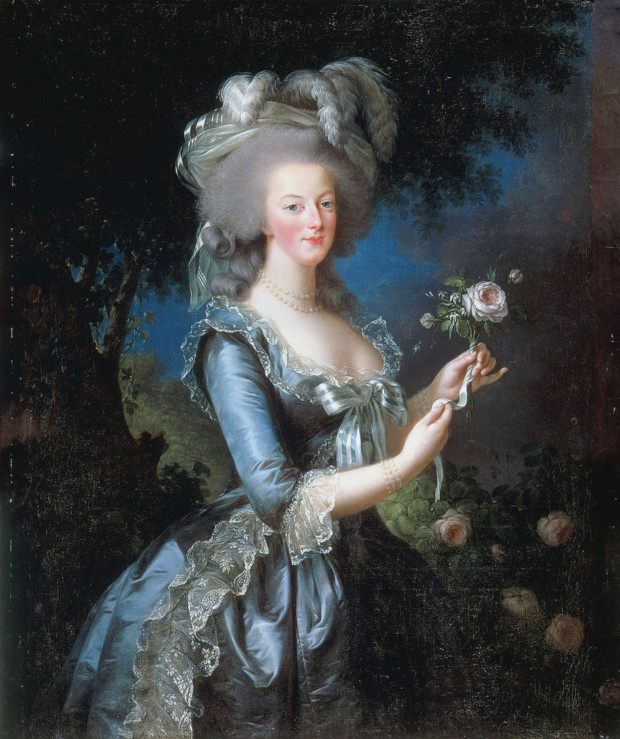
After the controversy caused by the previous portrait, Le Brun quickly prepared another one to exhibit at the Salon. This time, she dressed the queen in a more classic, blue-gray Lyon silk dress.

For Marie Antoinette, the harp was the perfect way to entertain and show off to her guests. It also allowed for a more intimate perspective of the Queen. She is not dressed in her full regalia. Instead, she’s wearing a morning gown and holds herself most elegantly in the center of the room.

Gautier-D’Agoty shows Queen Marie Antoinette of France as a strong ruler. It was strongly disliked, when the portrait was presented to Marie Antoinette and the court. This suggested that the artist had incorrectly rendered the Queen or had depicted her in an unflattering light.
Part of the power of this painting comes from the portrayal of Marie Antoinette as a wealthy, majestic queen surrounded by various trappings. Her right hand rests on the globe, expressing worldliness and global knowledge. Her left hand floats delicately by her waist giving her the appearance that she, too, might be slightly floating within her voluminous skirts.
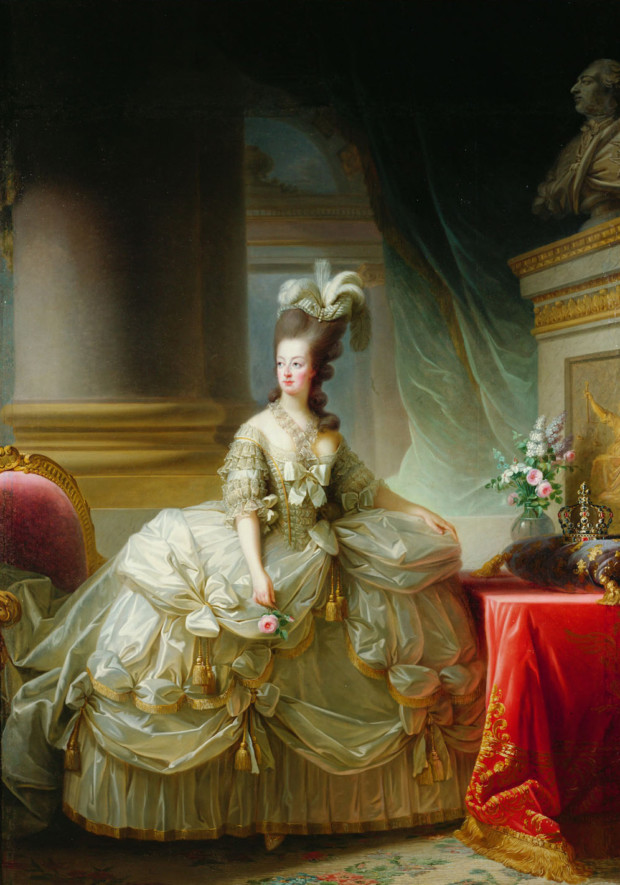
In this painting, the Queen wears an elaborate golden white dress. Her hair is piled high and she wears a feathery headdress. All around her are the accouterments of her station. These include huge columns and a marble bust of her husband, Louis XVI, displayed high atop a pedestal. Behind her sits a table, on which rests a crown. The painting was originally meant for the queen’s brother, Emperor Joseph II of Austria. However, Marie Antoinette was so pleased with it that she ordered copies to be made. She sent one of these to Catherine the Great of Russia and kept another for her own apartments at Versailles.
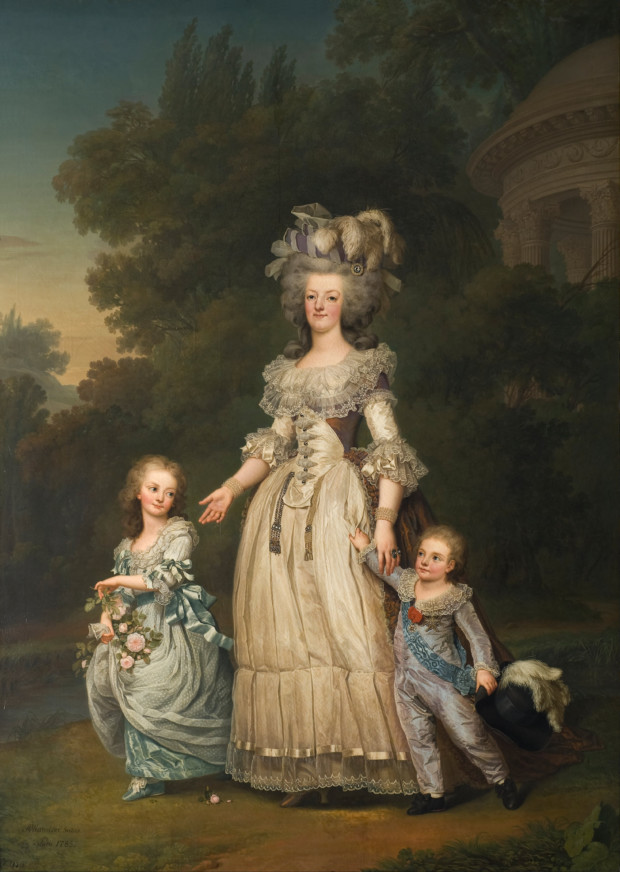
Adolf Ulrik Wertmüller portrays the Queen in an environment where she spent much of her time: the gardens surrounding her palace Petit Trianon, near Versailles. This portrait was part of a strategy to change the official image of Marie Antoinette. Instead of seeing her as a frivolous foreigner who loved life’s luxuries, here she is the mother of all France.
Marie Antoinette was 30 years old when the portrait was painted. Louis-Joseph was four and died three years later of tuberculosis. Marie-Thérèse Charlotte was the only member of the family to survive the Revolution.

This is a state portrait of Marie Antoinette and her three surviving children, Marie Thérèse, Louis Charles (on her lap), and Louis Joseph. Louis Joseph holds up the drape of an empty bassinet. This signified the recent death of Marie’s fourth child. Again, this was meant to improve her reputation by depicting her as a mother in simple, yet stately attire.
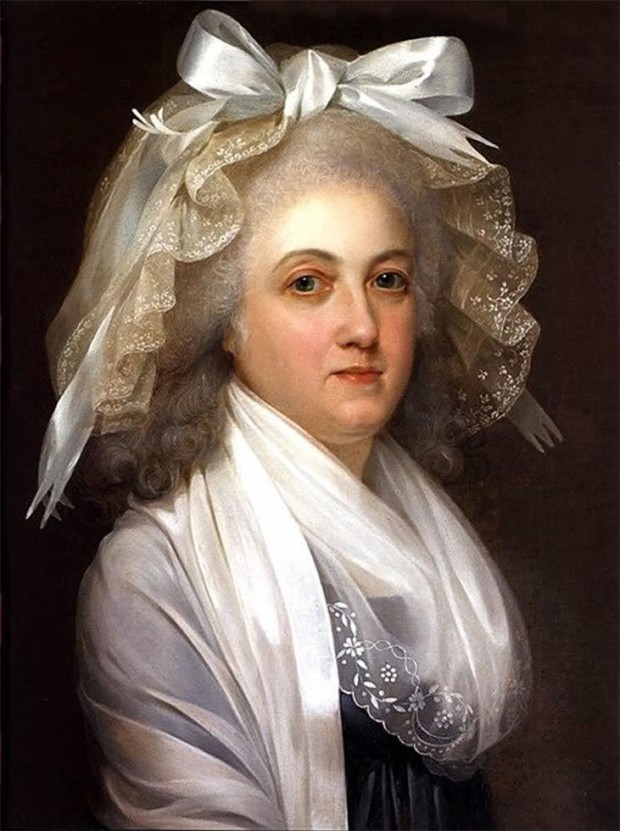
Early on the October 16, 1793, Marie Antoinette, then called “Widow Capet” was declared guilty of the three main charges against her. The first charge was a depletion of the national treasury. The second was a conspiracy against the internal and external security of the state. The third charge was high treason, which resulted from her intelligence activities in the interest of the enemy. This last charge alone was enough to condemn her to death.

This simple drawing by none other than the famous Jacques-Louis David is a powerful reminder of Marie Antoinette’s final days. The woman who was the epitome of the lavish lifestyle of the French royals, a symbol of all the things people hated about the ancien régime, died as a traitor at the guillotine. She was transported to the execution site in an open cart, on a rope leash, wearing a plain white dress, with her hair shorn and hands tied behind her back. This is exactly how she was depicted by David, a supporter of the French Revolution. However, this drawing also seems to show the composure the queen maintained during her final moments, despite the humiliation she faced. Marie Antoinette was executed at the Place de la Révolution on October 16, 1793.
DailyArt Magazine needs your support. Every contribution, however big or small, is very valuable for our future. Thanks to it, we will be able to sustain and grow the Magazine. Thank you for your help!